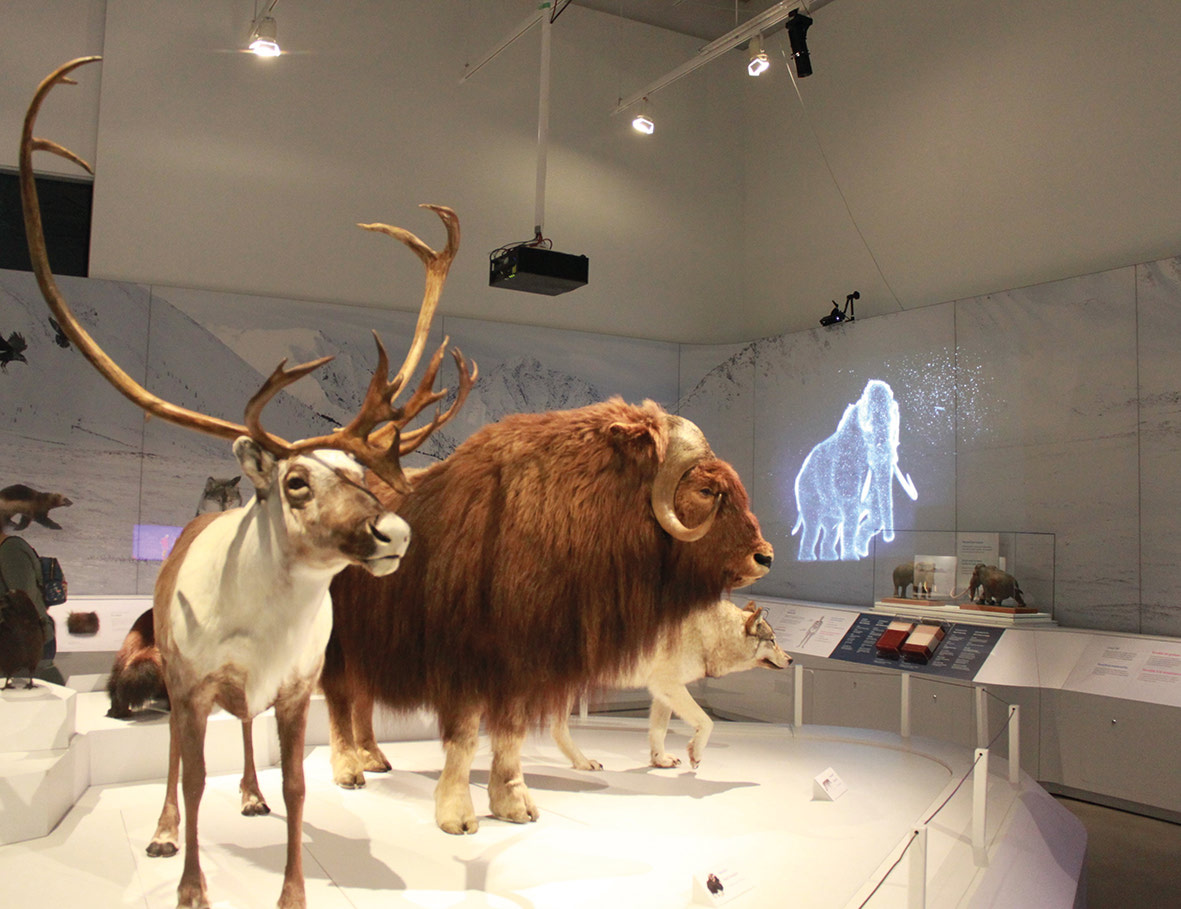Museum of Nature’s “Planet Ice: Mysteries of the Ice Ages” exhibit extended until January 8.
Greg Newing
The Canadian Museum of Nature’s summer exhibit, “Planet Ice: Mysteries of the Ice Ages”, which reopened this May after a pause for several years due to public health measures, will continue to be open for visitors this winter until January 8. The popular exhibit explores the impact of ice and cold on the earth’s history as well as its continued importance for supporting life on this planet. It also explores the role of human activity on the earth’s natural heating and cooling cycles and highlights practical steps that can be taken to respond to climate change.
While visiting an ice-themed exhibit might not be on the top of your list as temperatures begin to drop over the coming months, it is definitely not something to miss out on. The exhibit has five different zones covering an 80,000-year period. Each zone focuses on a major theme such as the role of ice and glaciers in shaping the foundations of life on earth and “lost lands” such as Beringia, the prehistoric land bridge that connected Asia to North America. The exhibit contains 140 specimens, models and artifacts including a skull from a “Packenham” whale that once swam in Champlain Sea, an inland body of water that once covered the Saint Lawrence and Ottawa River valleys (including present-day Aylmer). The exhibit also showcases tools and different techniques that humans have developed over time for survival in cold climates. On display for the first time is a remarkable collection of tools and other artifacts from the Tuniit (Dorset) and Thule-Inuit peoples made available on behalf of the Government of Nunavut.
There are several engaging interactive elements such as a ‘design your own snowflake’ station and an interactive screen where visitors can “conjure” a giant woolly mammoth in a snowstorm. In addition, there is an augmented reality app developed for the exhibit which can be downloaded for free at www.planeticear.com or from the Apple Store and Google Play. The app allows you to take photos with ice age mammals such as the mammoth or sabre-toothed cat.
Planet Ice is the outcome of three years’ work that involved close collaboration between a diverse group of scientists and the exhibit’s design team. Archeologist and palaeobiology curator for the museum Dr. Scott Rufolo explained how creating the exhibit involved “nearly a year’s worth of consultation between design team and research and collections'' which included the participation of scientists from a wide range of fields and disciplines such as archeology, paleontology, zoology and mineralogy. This collaboration and investment of time ensured that the final exhibit was both engaging and accessible to the public while also remaining true to the complex scientific research on which it is based. Describing its mission as “science advocacy”, the museum's head of design Dan Boivin explained that “one of the museum’s main aims is to inspire people to become interested and to care for nature.”
Aylmer research and collections facility
Much of the background work for Planet Ice as well as other exhibits is carried out at the Museum of Natural History’s Research and Collections facility that is located in at 1740 Pink Road in Aylmer. Containing a collection of over 10 million specimens, the research and collections facility is one of Canada’s major research institutions and is part of a growing international network of Global Biodiversity Information Facilities dedicated to collecting and sharing scientific data on biodiversity worldwide. Every year there is an open house at the facility in mid October where visitors can see the museum’s vast collection and speak with experts on site.
While tickets for this year’s open house on October 15 are now sold out, there is an ongoing need for volunteers at the facility to help with processing and organizing its growing collection of specimens and to assist with other tasks that support the work of the museum. Dr. Rufolo noted that there is no need to have a science background or formal training to volunteer at the facility, “all you need is to simply have an interest in learning about natural history”. Those interested can contact the museum’s volunteer Program Coordinator Katja Rodriguez at volunteer-benevole@nature.ca or by phone at 613.566.4261.
The Planet Ice exhibit is located at the Canadian Museum of Nature at 240 McLeod Street in Ottawa. For tickets and entry fees visit the museum’s website: www.nature.ca or call at 613.566.4700.
Photo caption: Artic animals on display at the newly opened Planet Ice exhibit. Photo credit: Greg Newing






